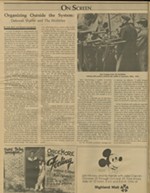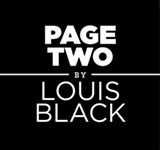The Silent Enemy
1930 Directed by H.p. Carver. Starring Chief Chauncey Yellow Robe, Chief Buffalo Child Long Lance, Chief Akawanush, Molly Spotted Elk, Cheeka.
REVIEWED By Louis Black, Fri., Oct. 8, 1993
Unfortunately, of the few of you who've seen the great silent films you've probably seen mostly lousy prints, faded and jerky. Silent films by the late 'teens were frequently gorgeous, drenched in rich blacks and whites (remember that one of Welles' innovations for Citizen Kane was to, in some way, use the huge lights of the silent era so that genius cinematographer Gregg Toland could get the beautiful shades of Kane. Released in 1930, The Silent Enemy may have been the last silent film released -- except for the ever-reactionary Charlie Chaplin's City Lights (1931) and Modern Times (1936) -- but it is not the place to begin developing a love for silents. Go to Vulcan Video and rent something as innocuous as Old Ironsides just to see how much fun they can be (not to mention how great are the films of such artists as Maurice Tourneur, Fritz Lang, Buster Keaton, Roscoe “Fatty'' Arbuckle, D. W. Griffith, F. W. Murnau and William S. Hart). The Silent Enemy is a big-hearted picture, following the late Twenties vogue of dramatic “documentaries” shot on location, almost always more fiction than reality. Carefully scripted and cast, this pretends to be a slice of life of the Ojibway tribe before Columbus arrived in the New World. Filmed during the winter on location in northern Ontario and Quebec, the movie has a definite feel to it. Game has become scarce for the Ojibway tribe, a lean seventh year after six rich ones. The medicine man argues for going south, the great hunter argues north. They go north. It's more than rocky and the medicine man never stops conspiring. This is a self-important liberal film, one whose politics are ultimately questionable. It participates in the Hollywood image of bad medicine man who represents the spiritual otherness of Indian life, and the good chief who represents a secular, though still mystical, order (not surprising in that much of the film was based on Jesuit diaries). Still, from the opening half-hour when an Indian kills a bear, then skins her and makes a sack out of her body in which he takes her two cubs home as pets to his son, until the amazing caribou hunt at the end, the film boasts a spooky majesty. It is slow and it is hokey but it is awesome, the minimal plot and action against the enormity of the snow and wilderness create a visual mood in which the film just goes on and on, not being about a story but about a way of life -- the silence enhancing and haunting.
A note to readers: Bold and uncensored, The Austin Chronicle has been Austin’s independent news source for over 40 years, expressing the community’s political and environmental concerns and supporting its active cultural scene. Now more than ever, we need your support to continue supplying Austin with independent, free press. If real news is important to you, please consider making a donation of $5, $10 or whatever you can afford, to help keep our journalism on stands.
May 3, 2022
The Silent Enemy, H.p. Carver, Chief Chauncey Yellow Robe, Chief Buffalo Child Long Lance, Chief Akawanush, Molly Spotted Elk, Cheeka







